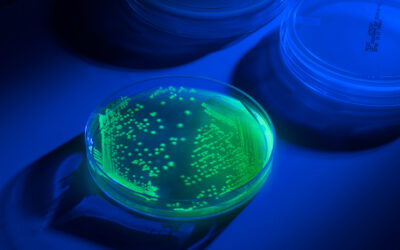
Ubiquitous in nature, Listeria monocytogenes can be found in many contamination sources making it difficult to eliminate from food processing facilities. Characteristics, such as the ability to grow at refrigerator temperatures, form biofilms, thrive in moist conditions, and remain viable in high concentrations of salt, help the microorganism survive in a food processing environment.
L. monocytogenes can cause a mild, noninvasive illness called gastroenteritis or a severe, often life-threatening disease called listeriosis. Listeriosis is an invasive infection occuring when the bacteria spreads beyond the gastrointestinal tract. It can cause meningitis, septicemia, and stillbirth and has a case-fatality rate is 20 to 30%. Elderly adults, neonates, pregnant women, immunosuppressed individuals and chronically-ill patients are most at risk for the disease. In pregnant women, L. monocytogenes can cross the placenta causing abortion, stillbirth, or preterm labor.
In this post we will outline recent outbreaks of Listeria monocytogenes, provide a desciption of the microorganism, and highlight where it can be found in food processing facilities.
Recent Listeria Outbreaks in the United States*
| Food | Year | States | Cases | Hospitalizations | Deaths | Recall |
| Frozen Vegetables | 2016 | CA, MD, WA | 8 | 8 | 2 | Yes |
| Raw Milk | 2016 | FL, CA | 2 | 2 | 1 | No |
| Packaged Salads | 2016 | CT, IN, MA, MI, MO, OH, NY, NJ, PA | 19 | 19 | 1 | Yes |
| Soft Cheeses | 2015 | CA, CO, IL, MA, MI, OH, NY, TN, VA, WA | 30 | 28 | 3 | Yes |
| Ice Cream Products | 2015 | AZ, KS, OK, TX | 10 | 10 | 3 | Yes |
| Prepackaged Caramel Apples | 2014 | AZ, CA, CO, MN, MO, NC, NM, NV, TX, UT, WA, WI | 35 | 34 | 7 | Yes |
| Sprouts | 2014 | IL, MI | 5 | 5 | 2 | Yes |
| Cheese | 2014 | GA, NY, TN, TX | 5 | 4 | 1 | Yes |
| Cheese | 2014 | CA, MD | 8 | 7 | 1 | Yes |
*Data compiled by Centers for Disease Control and Prevention (CDC)

L. monocytogenes growing on BIO-RAD RAPID’L.Mono Chromogenic Media
Description of Listeria monocytogenes
Appearance: Gram-positive, motile, non-spore-forming facultative anaerobic rods. Cells possess one to six peritrichous flagella. Motility varies with the temperature. Characteristic tumbling motility is seen in a wet mount at 20° to 28°C.
Conditions for Growth: Although its optimal temperature for growth is 30° – 37°C , L. monocytogenes can grow at temperatures ranging from 0° to 49°C. It is capable of growing in 10 to 12% NaCl. It grows optimally at water activity (aw) values of >0.97 but it can survive in conditions where aw is as low as 0.83.
Isolation: Clinical specimens are often plated on Tryptic Soy Agar with 5% sheep blood and incubated at 35-37°C in 5% CO2. Food and environmental samples are incubated in enrichment broth overnight and then transferred to a selective media such as modified Oxford agar. Many laboratories use chromogenic agar to isolate and identify L. monocytogenes.
Characteristics: Produces catalase, hydrolyzes esculin, beta-hemolytic on blood agar.
Habitat: Found widely in soil, plants, decaying vegetation, water, silage, and animal and human feces.
Serotypes: There are 13 serotypes of L. monocytogenes. The most likely serotypes to cause disease in humans are 1/2a, 1/2b and 4b. Phage typing systems or molecular typing methods such as PFGE are used to determine the serotype of an isolate.
Food Contamination: Ready-to-eat (RTE) foods are at risk for contamination with Listeria monocytogenes. Foods that have become contaminated in the past include deli meats, frankfurters that are not reheated, unpasteurized milk, smoked seafood, vegetables, cooked RTE crustaceans, and soft, unfermented cheeses such as Camembert and queso blanco fresco. Even if RTE foods are refrigerated, they can still cause food outbreaks because the microorganism can slowly multiply at cold temperatures.
Contamination Potential: Sources of contamination on farms include plants treated with sewage or manure and feces from birds and animals. The microorganism can enter food processing plants on workers’ shoes, animal carcasses contaminated with feces, and raw plants. It has been detected in moist areas such as floor drains, wet floors, and sinks. Other potential sources of contamination include brine solutions used in chilling refrigerated RTE foods, slicers, dicers, shredders, blenders, utensils, and gloves. L. monocytogenes can form biofilms, making it difficult to remove.
Family: Listeria monocytogenes belong sot the Phylum, Firmicute; Class Bacillii; Order, Bacillales; Family, Listeriaceae; Genus, Listeria; Species, monocytogenes. Other species in the family include L. ivanovii, L. innocua, L. seeligere, L. welshimeri, and L. grayi. With the exceptions of L. monocytogenes and L. ivanovii, the species are nonpathogenic. L. ivanovii is an animal pathogen.

Are you testing for Listeria monocytogenes in your food lab? We have you covered. Click here to find the strains and formats you need.
References
FDA. (2008) Guidance for Industry: Control of Listeria monocytogenes in Refrigerated or Frozen Ready-To-Eat Foods; Draft Guidance.
McLauchlin, J., Rees, C. (2009). Genus I. Listeria. In Bergey’s Manual of Systematic Bacteriology (2nd ed., Vol. 3, pp. 244-257). New York: Springer.
Swaminathan, B., Cabanes, D. Xhang, W., Cossart, P. (2007) Listeria monocytogenes, In Food Microbiology Fundamental and Frontiers (3rd edition, pp. 457-491). Washington, DC: ASM Press.
Wellinghausen, W. (2011). Listeria and Erysipelothrix. In Manual of Clinical Microbiology (10th ed., Vol. 1, pp. 403-408). Washington, DC: ASM Press.





The condition of the environment can impact the expression of genes. Advanced DNA technology is the fastest growing area in health science and the governments and businesses around the world are investing huge amount of money in this area.